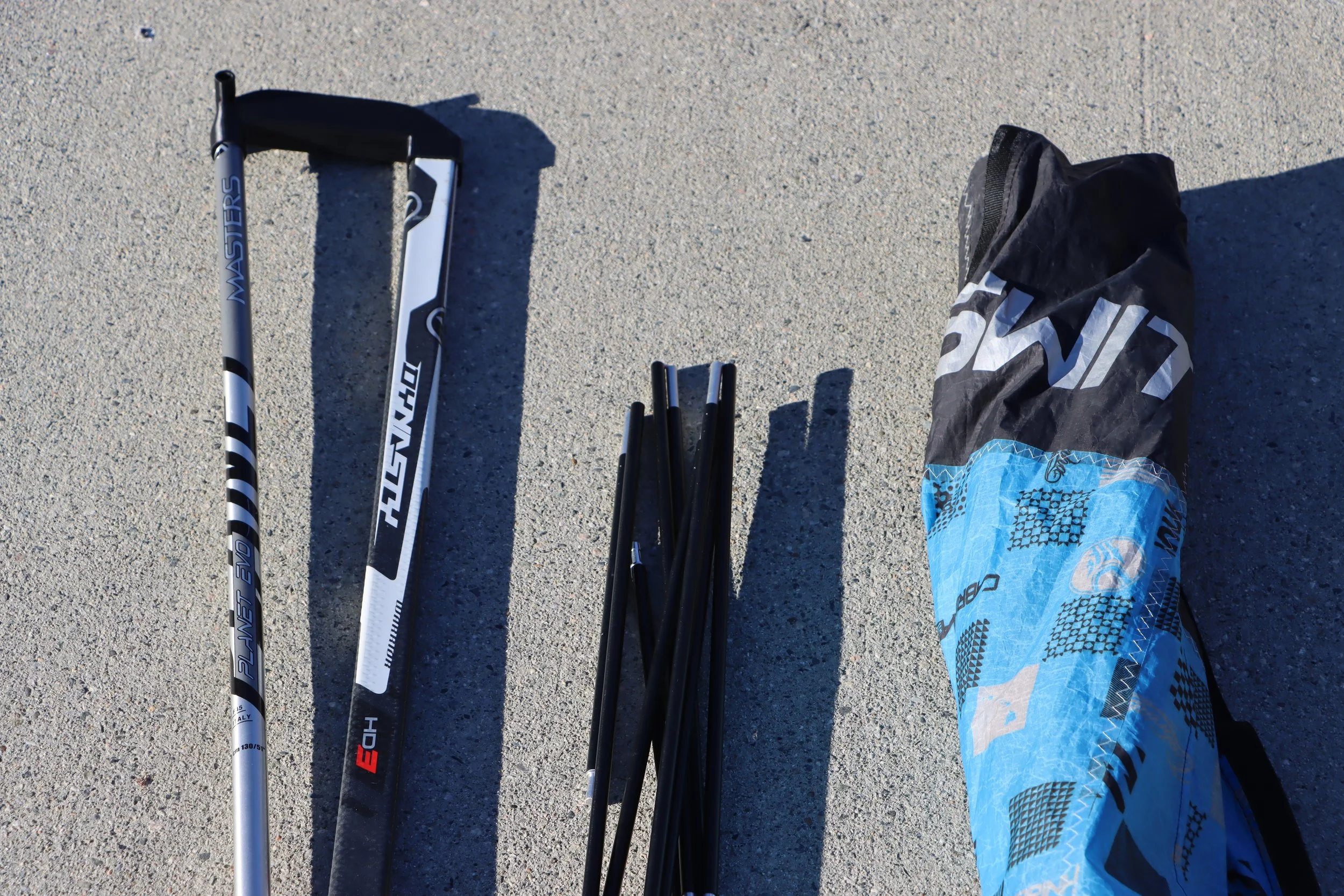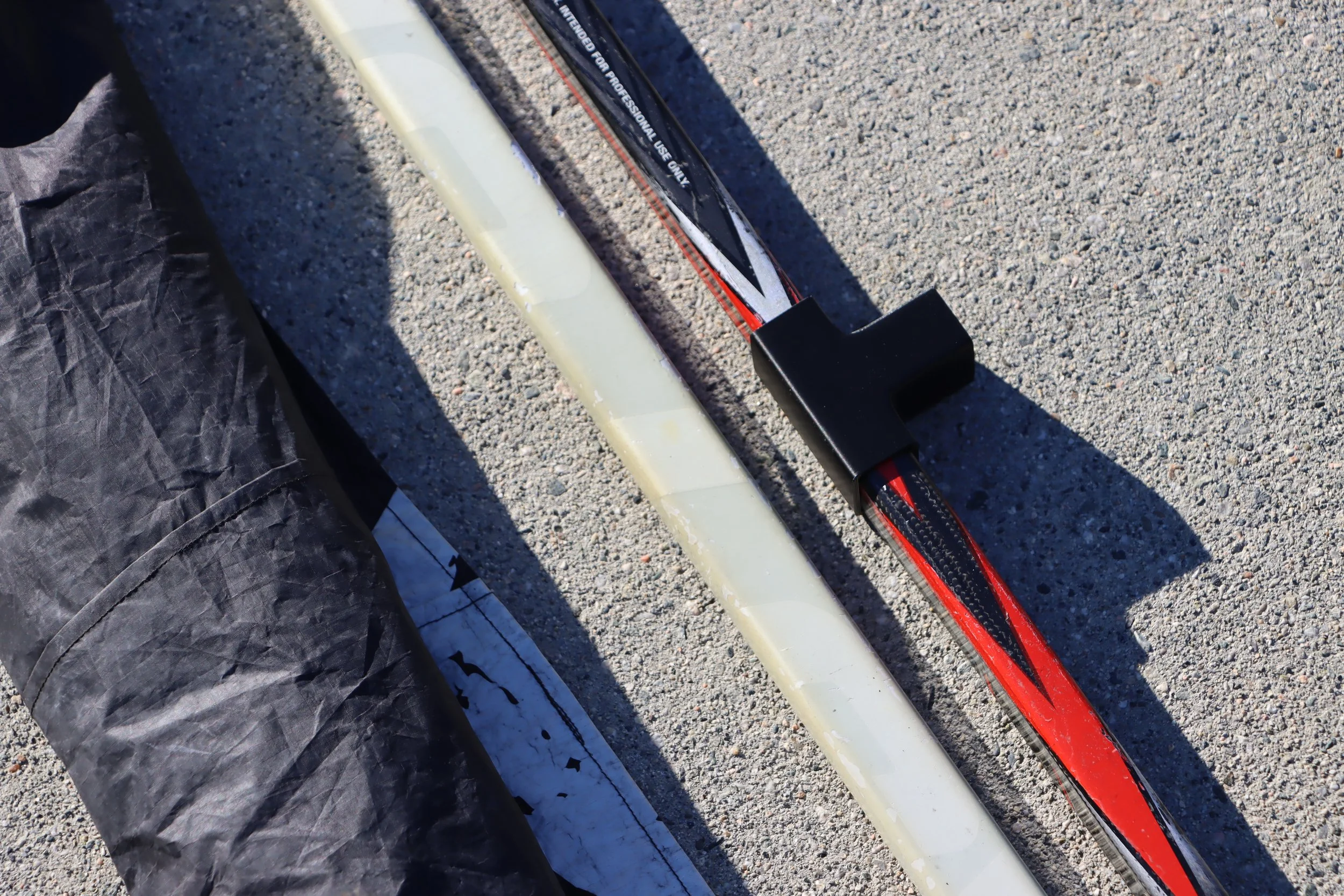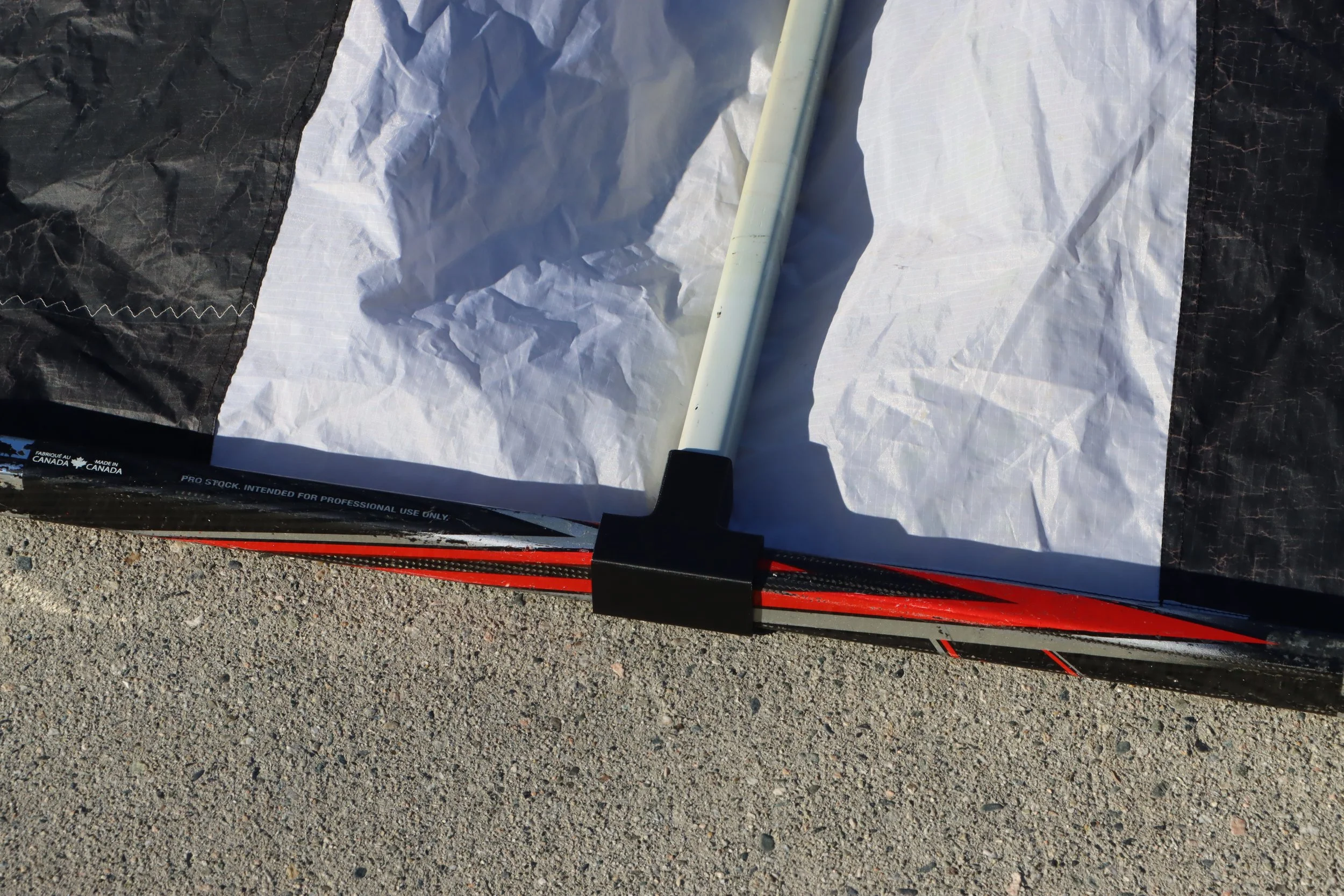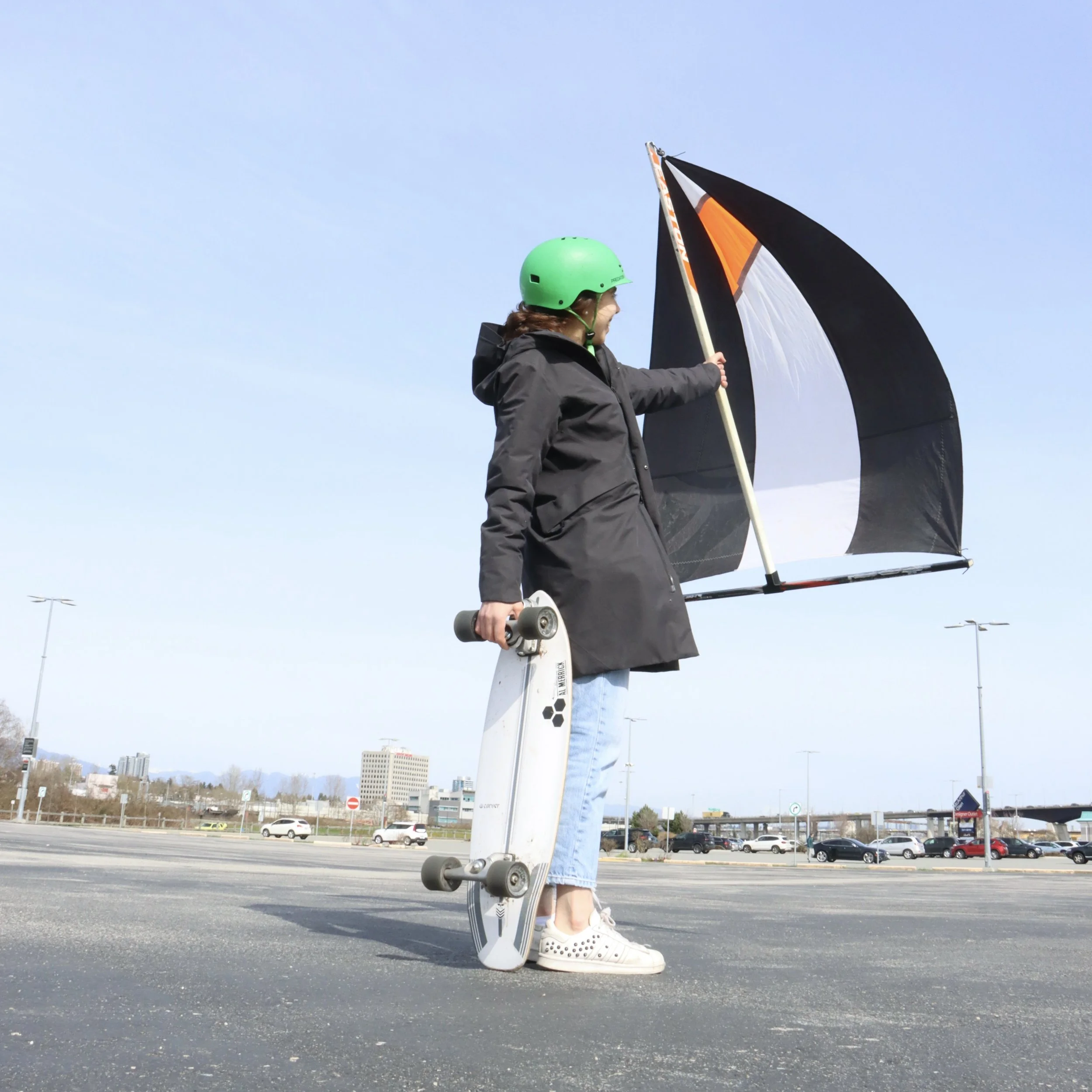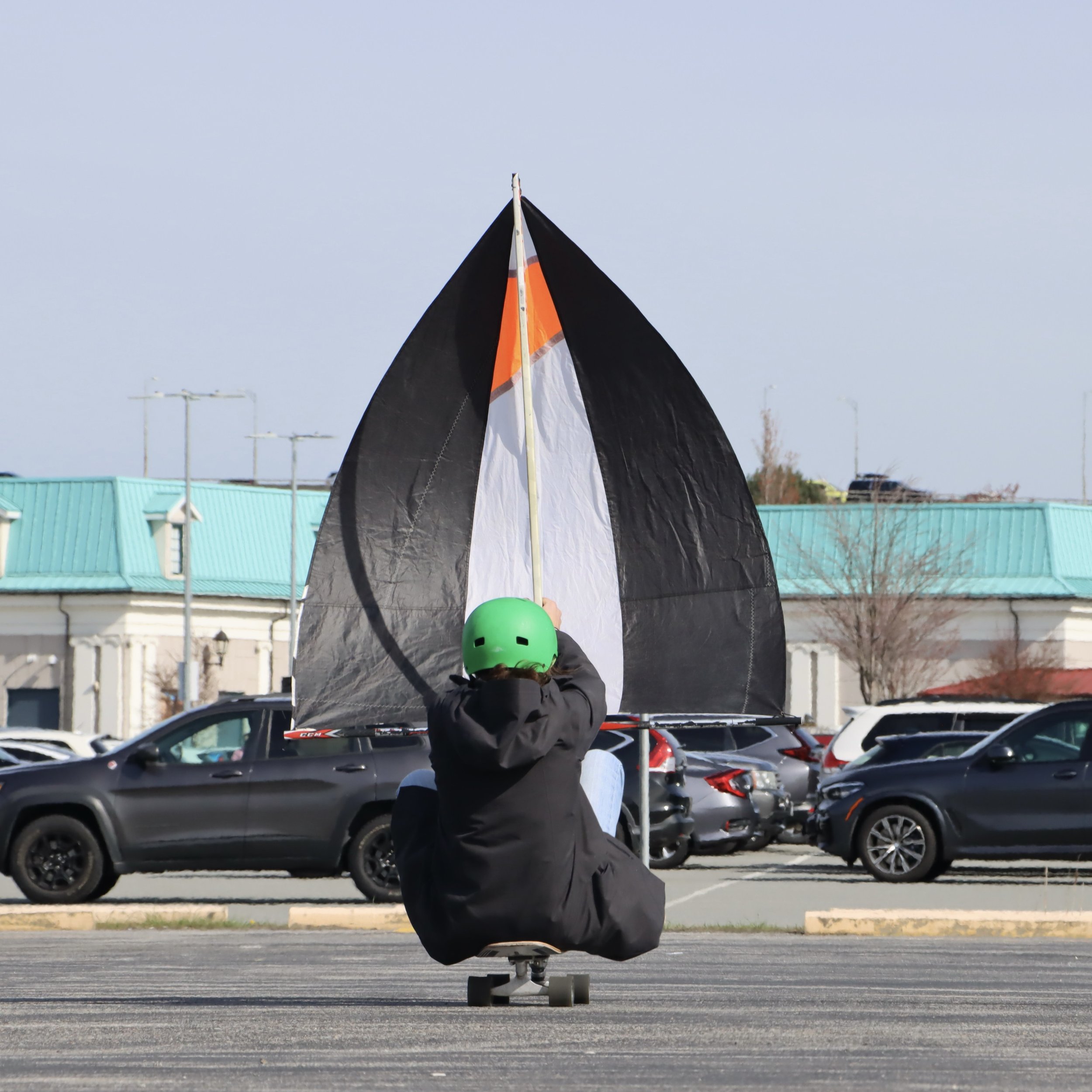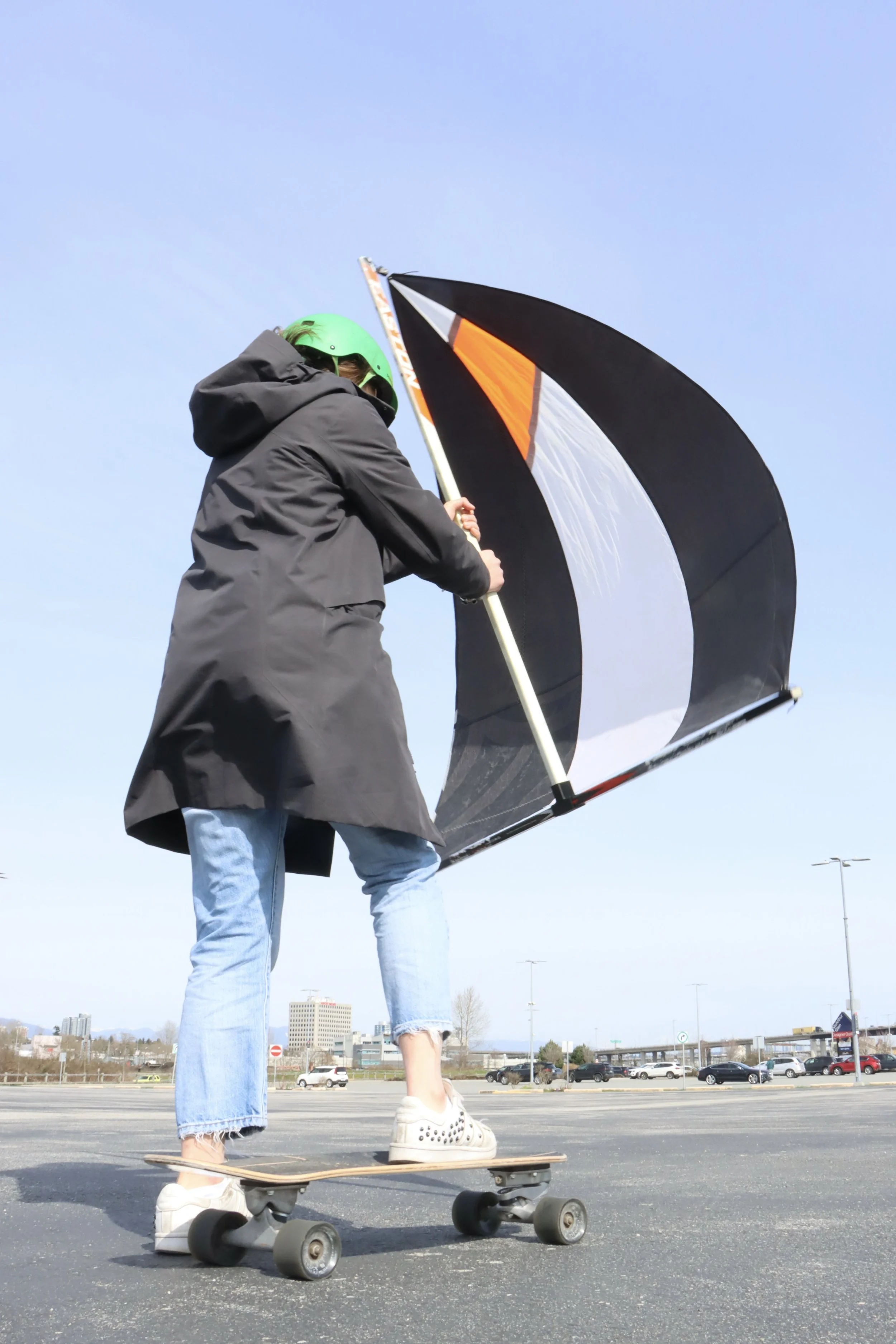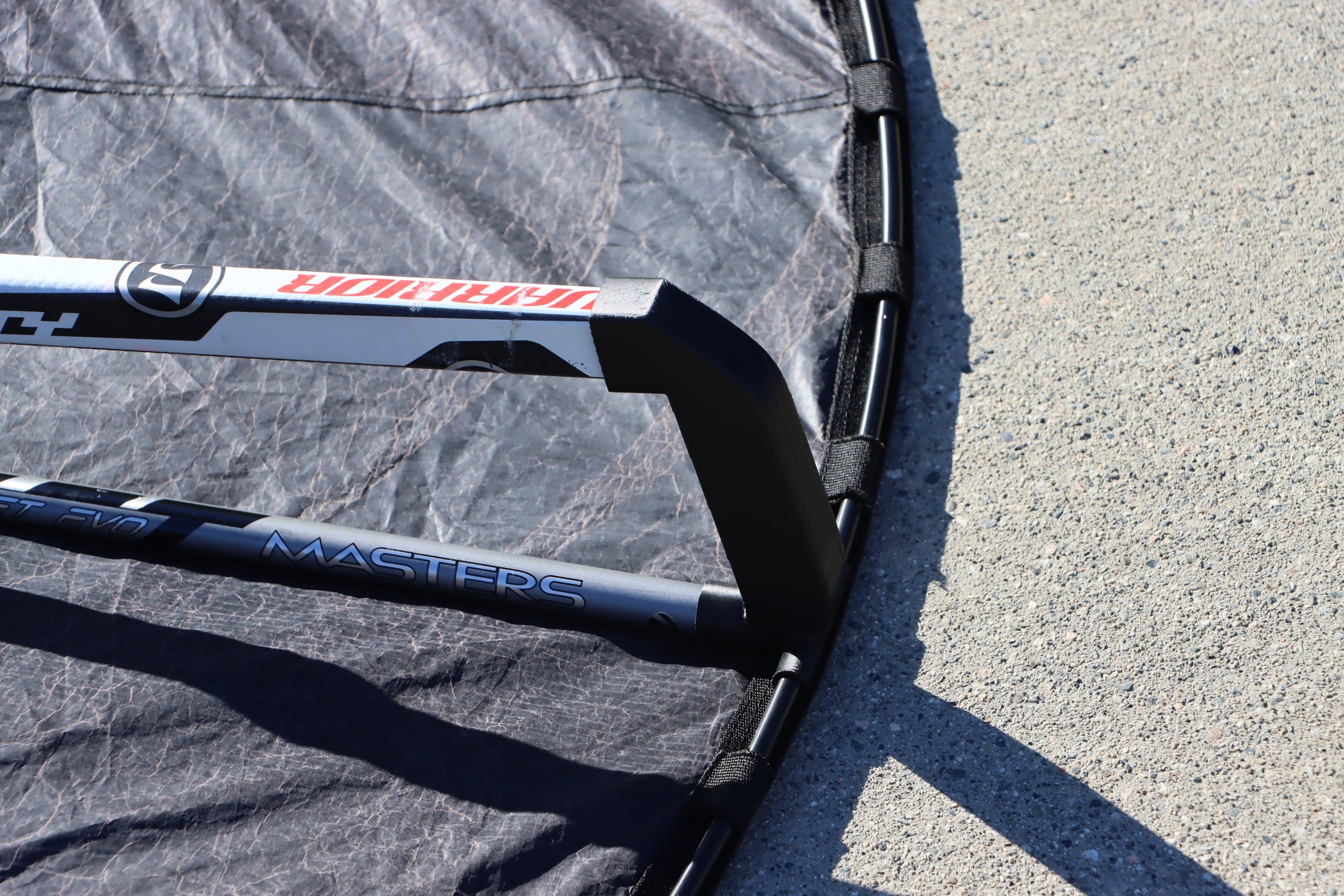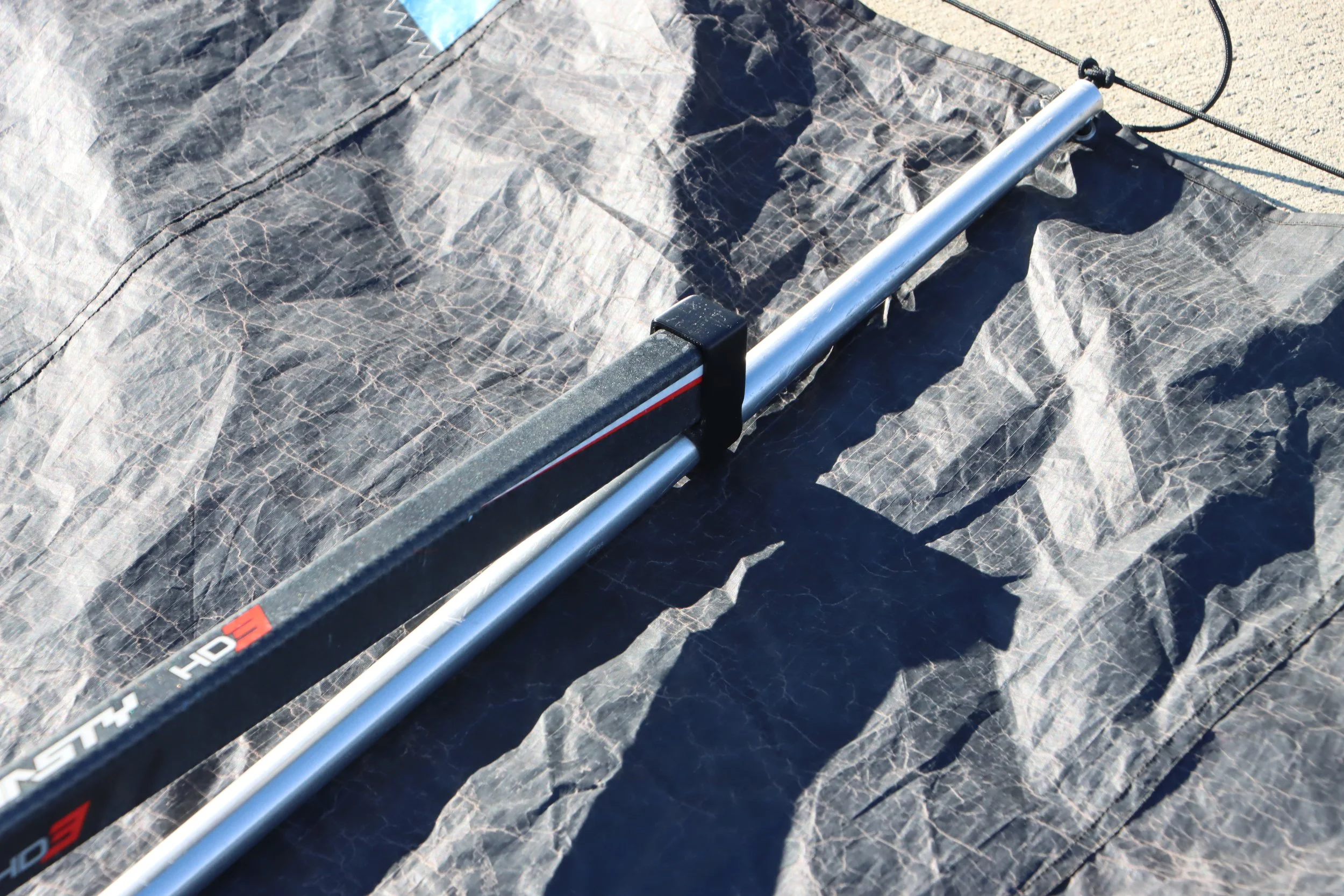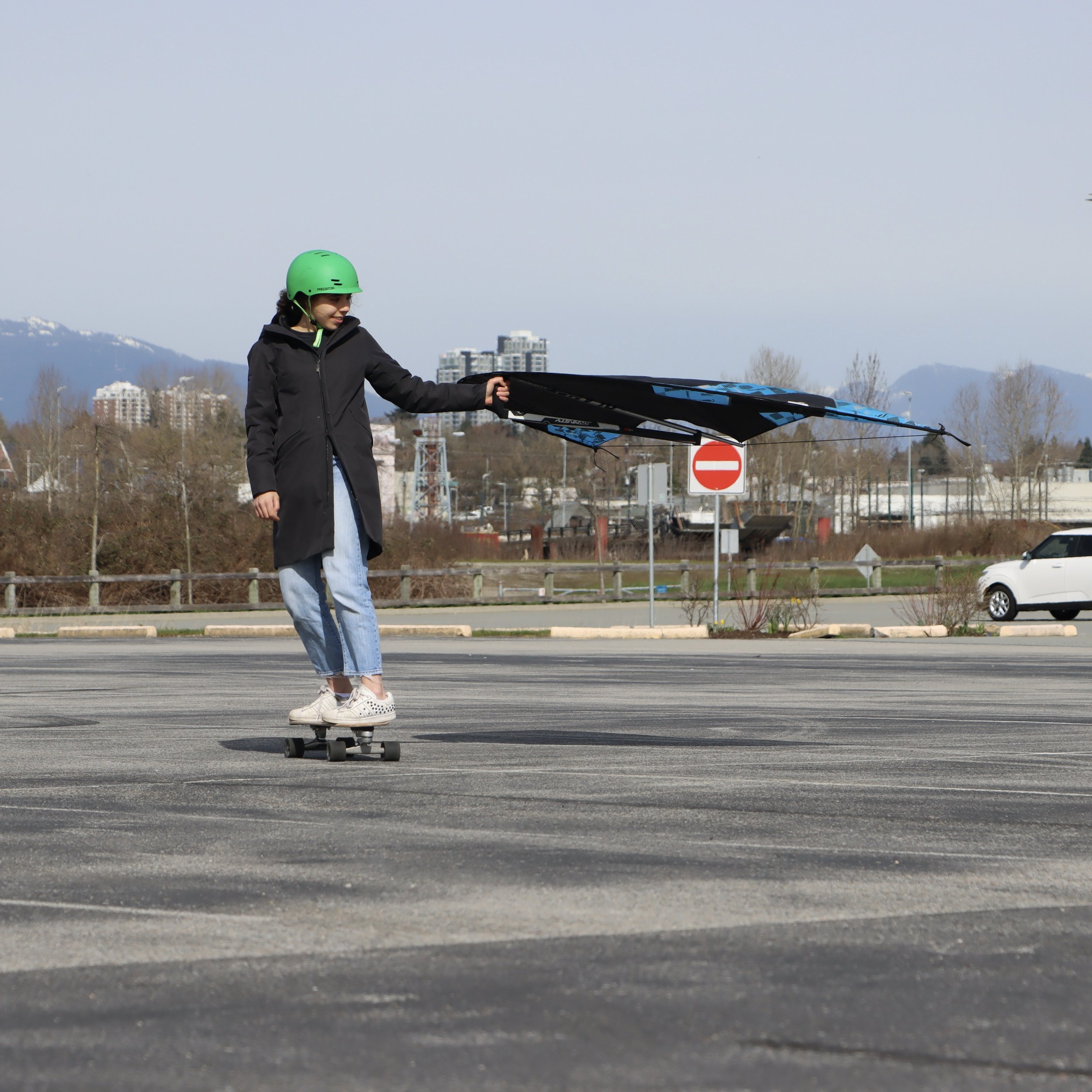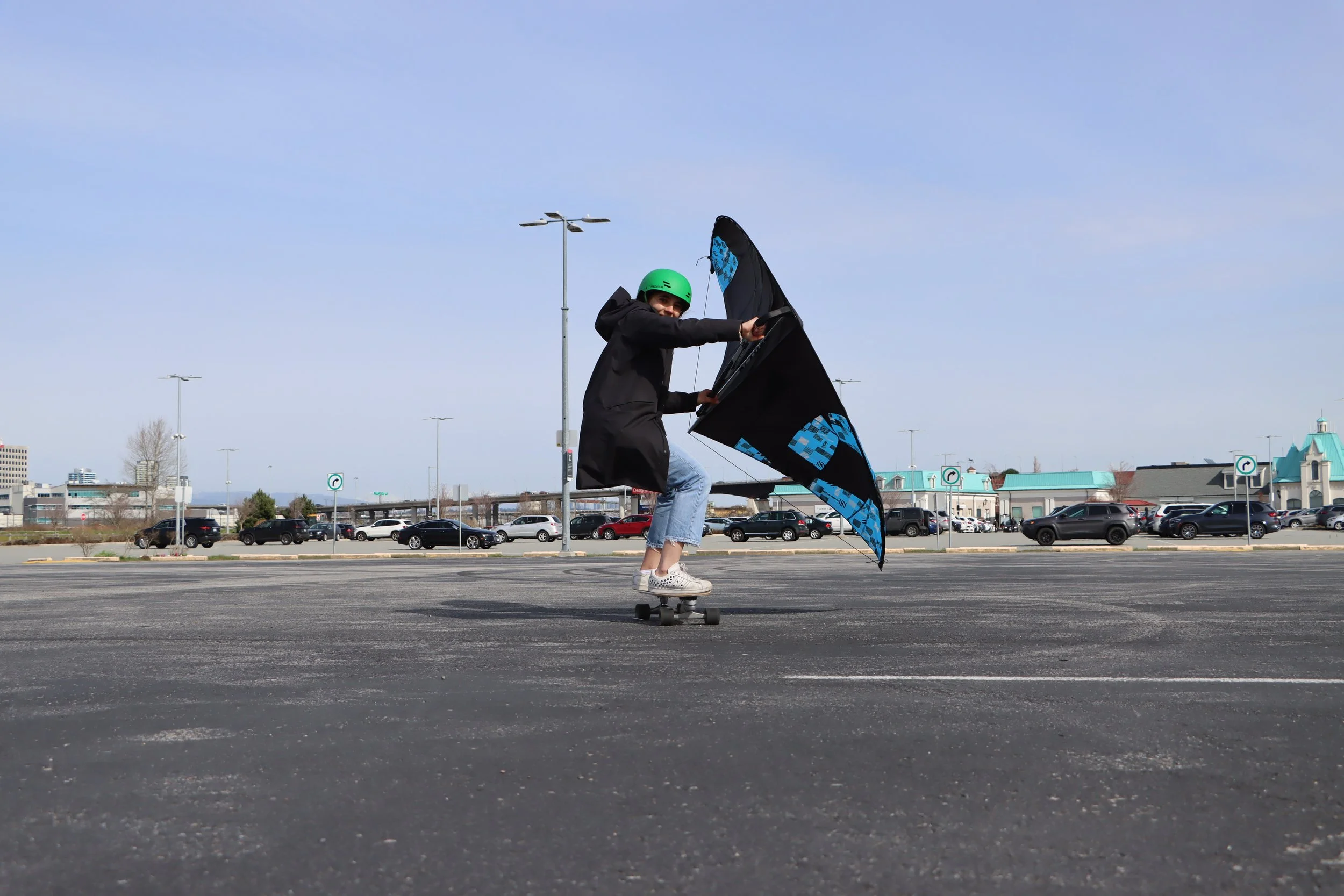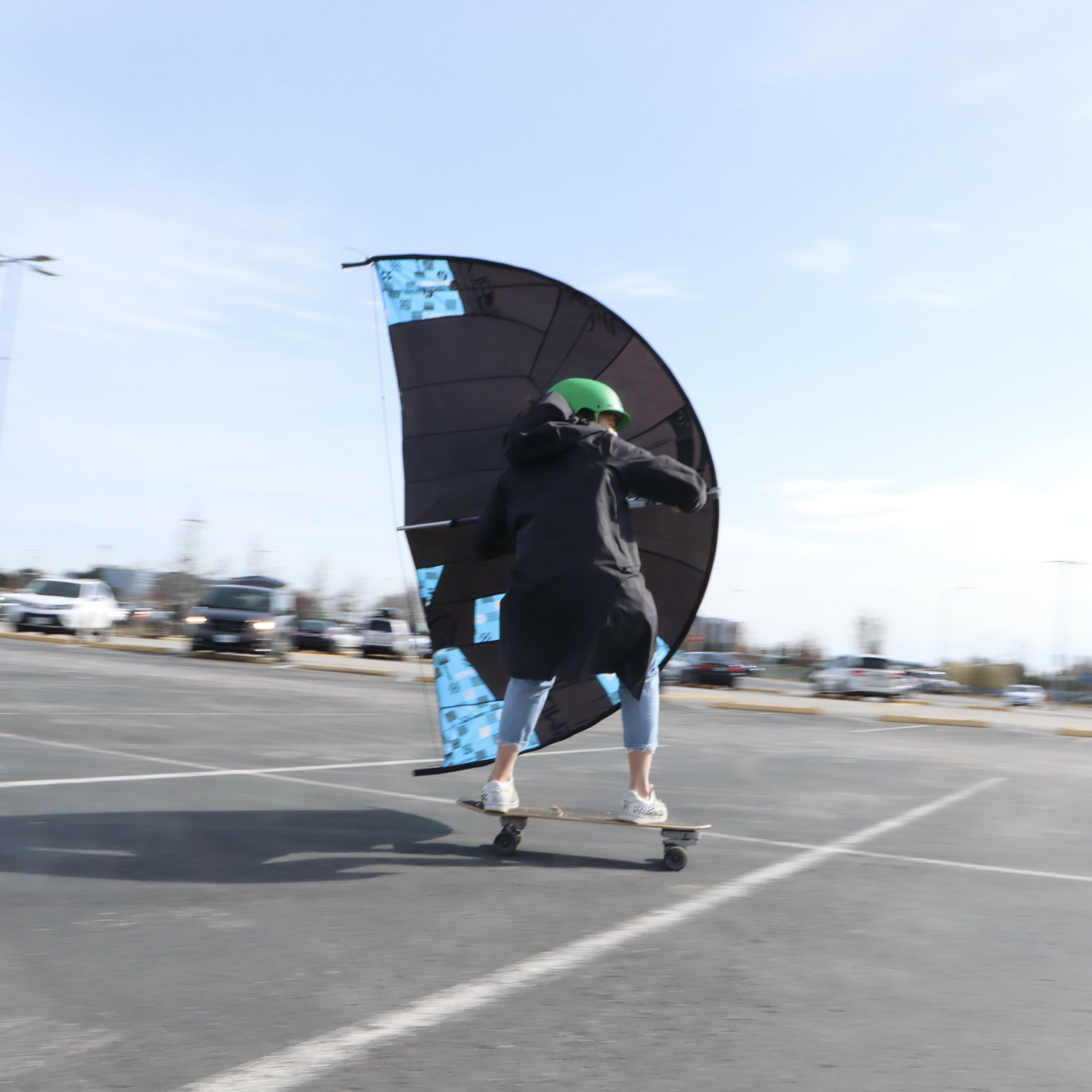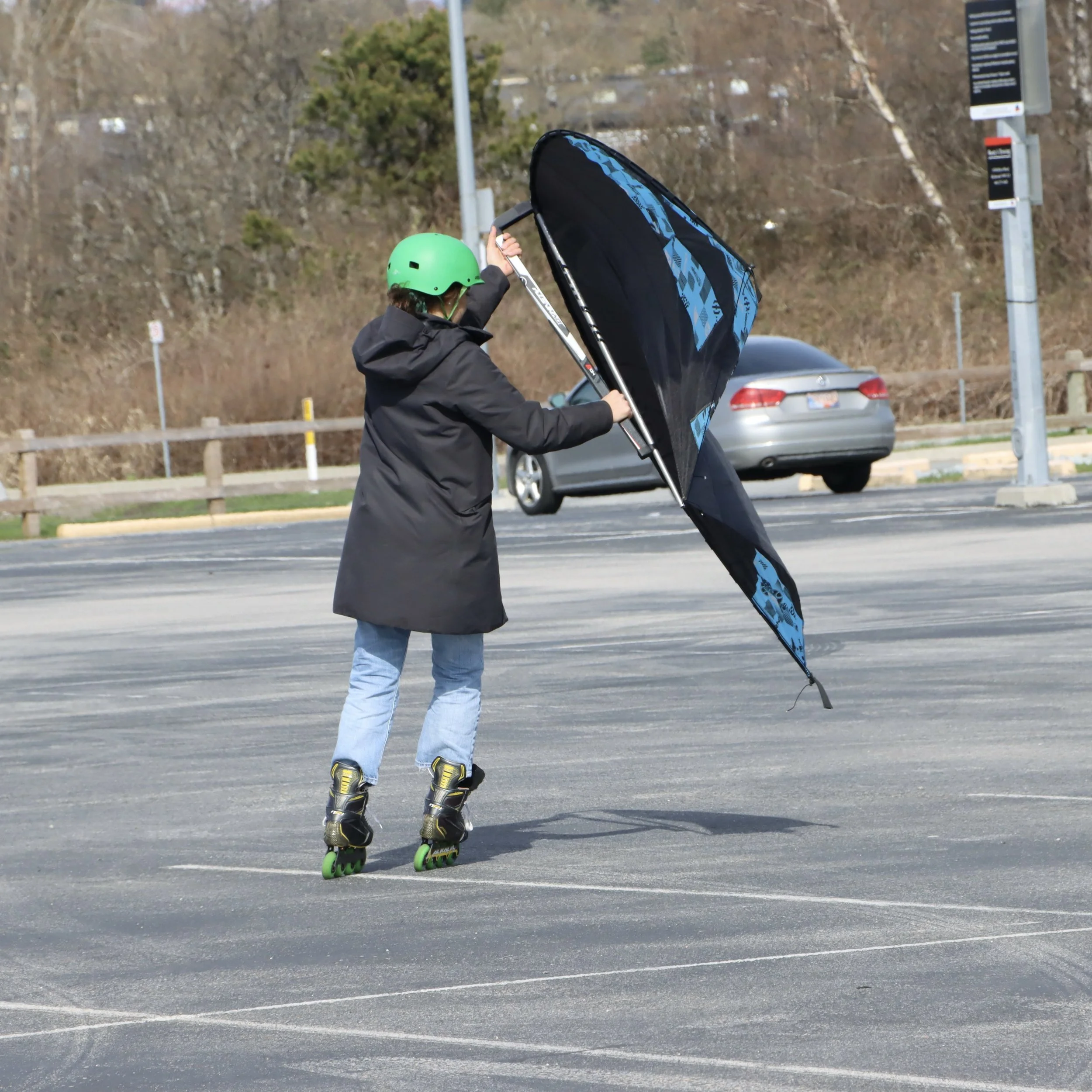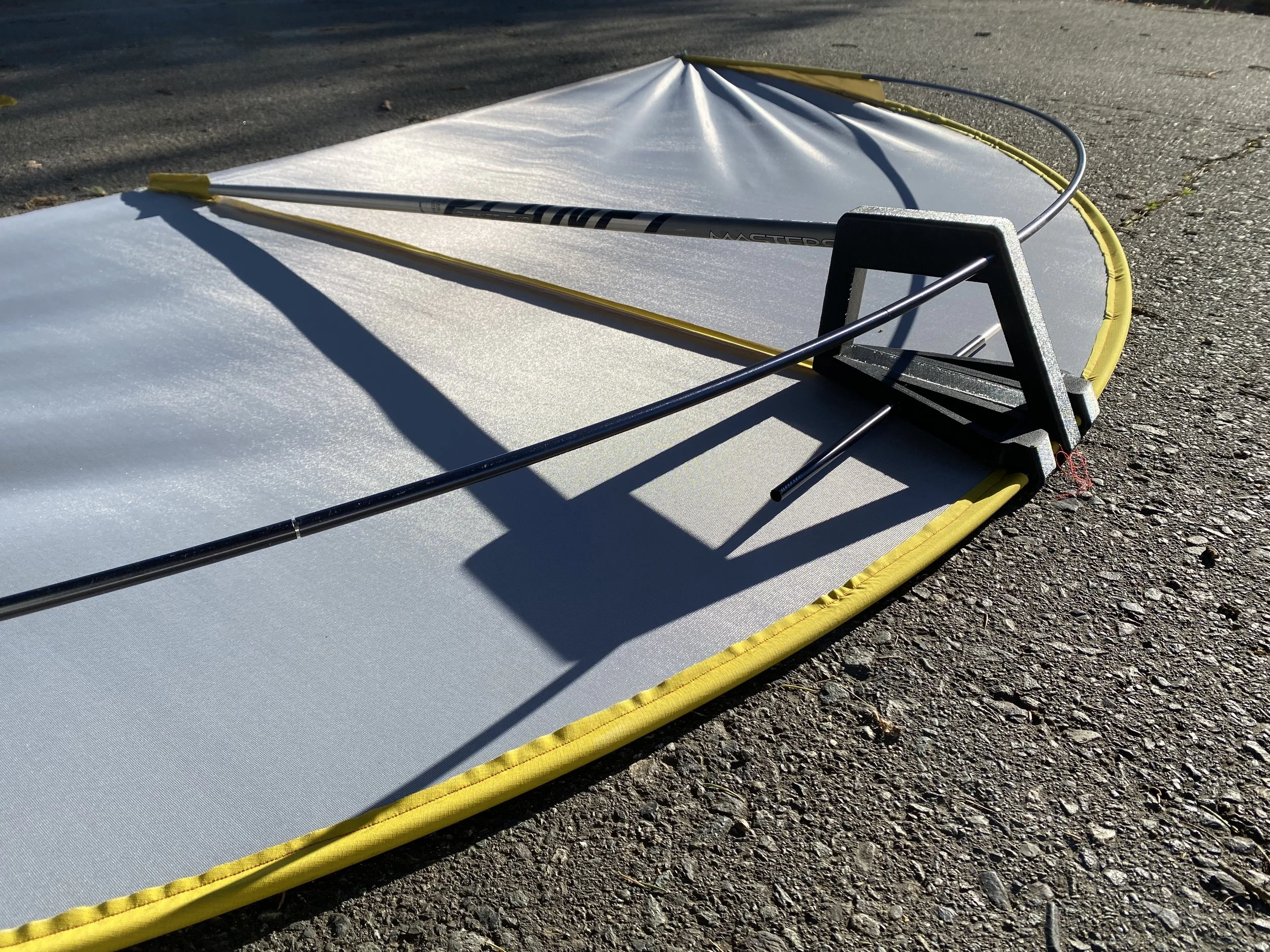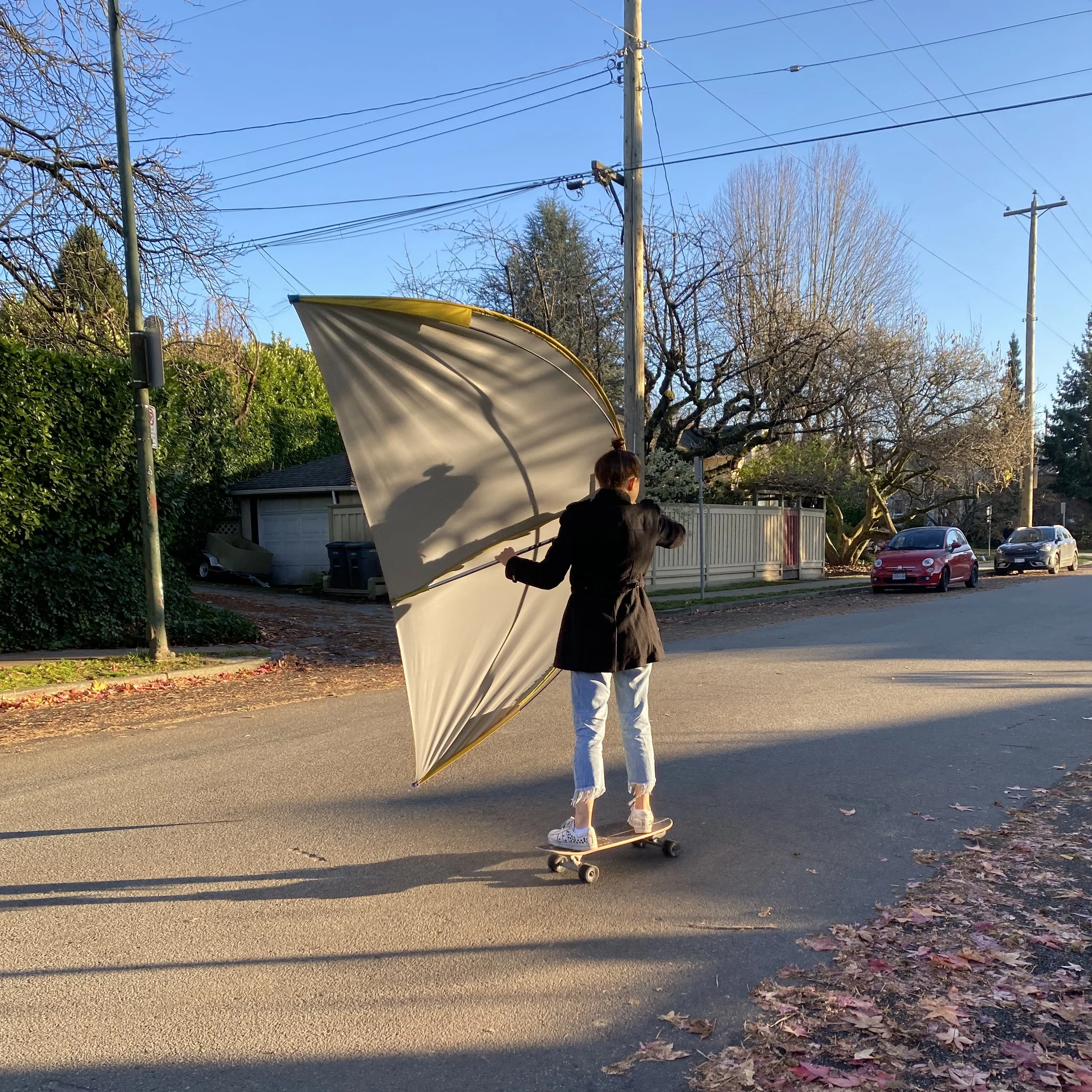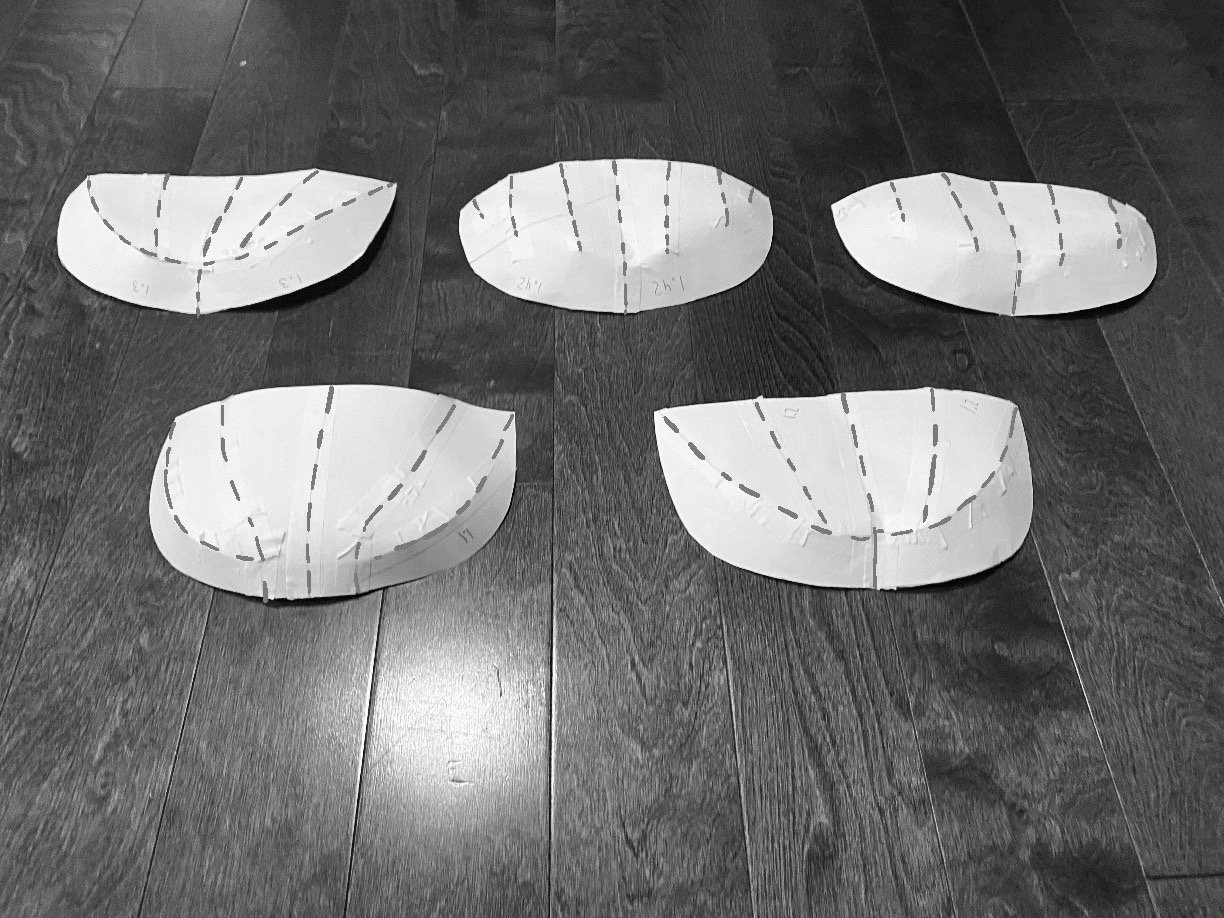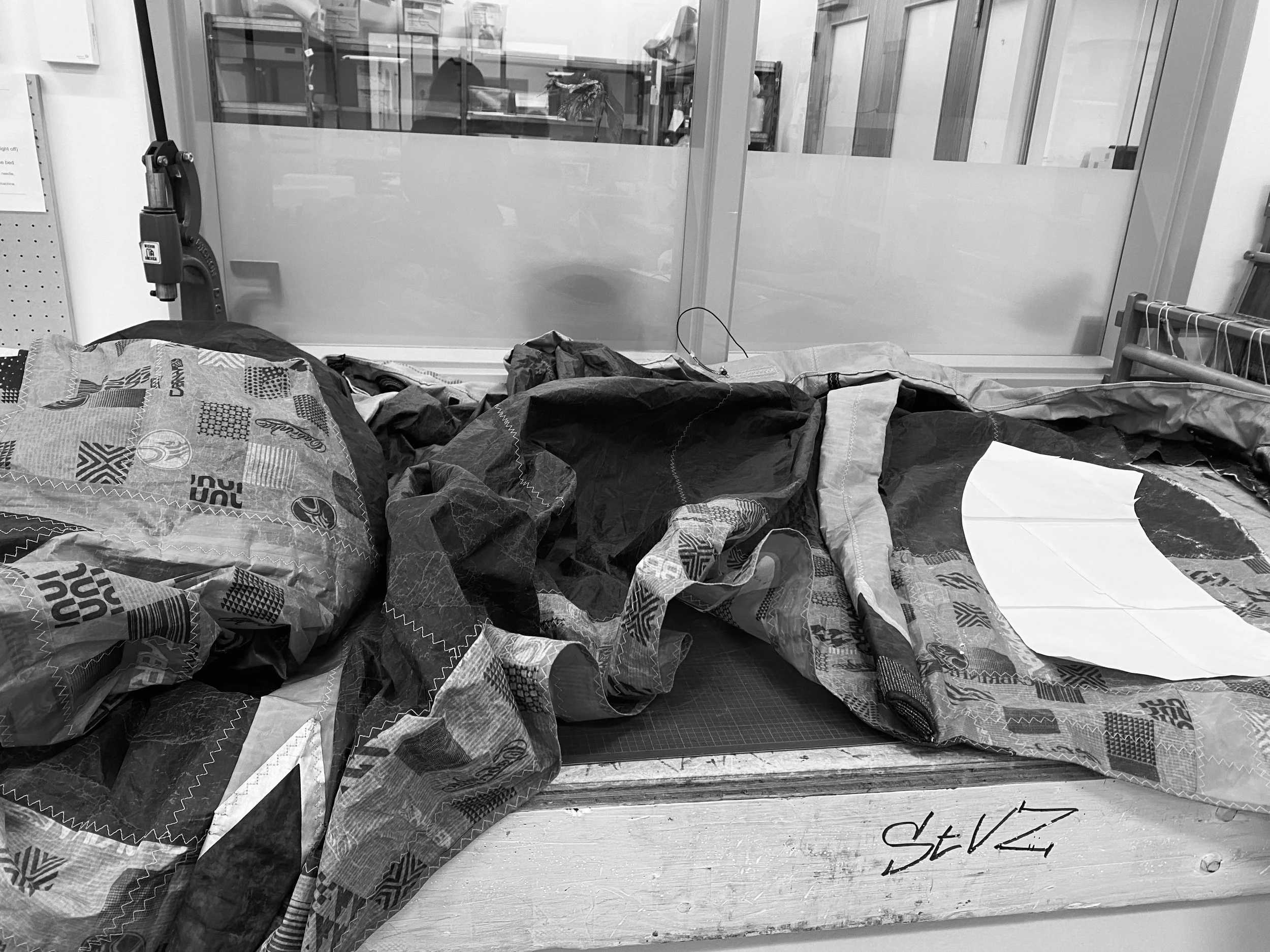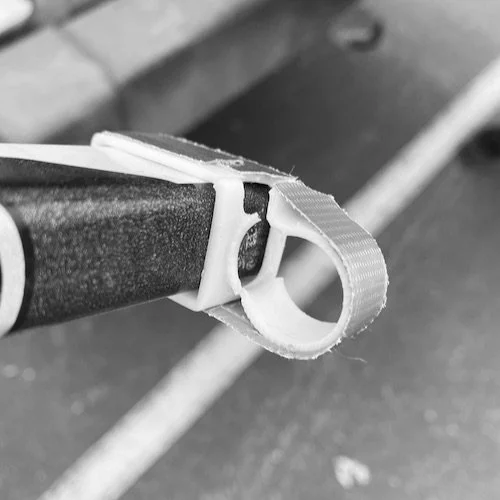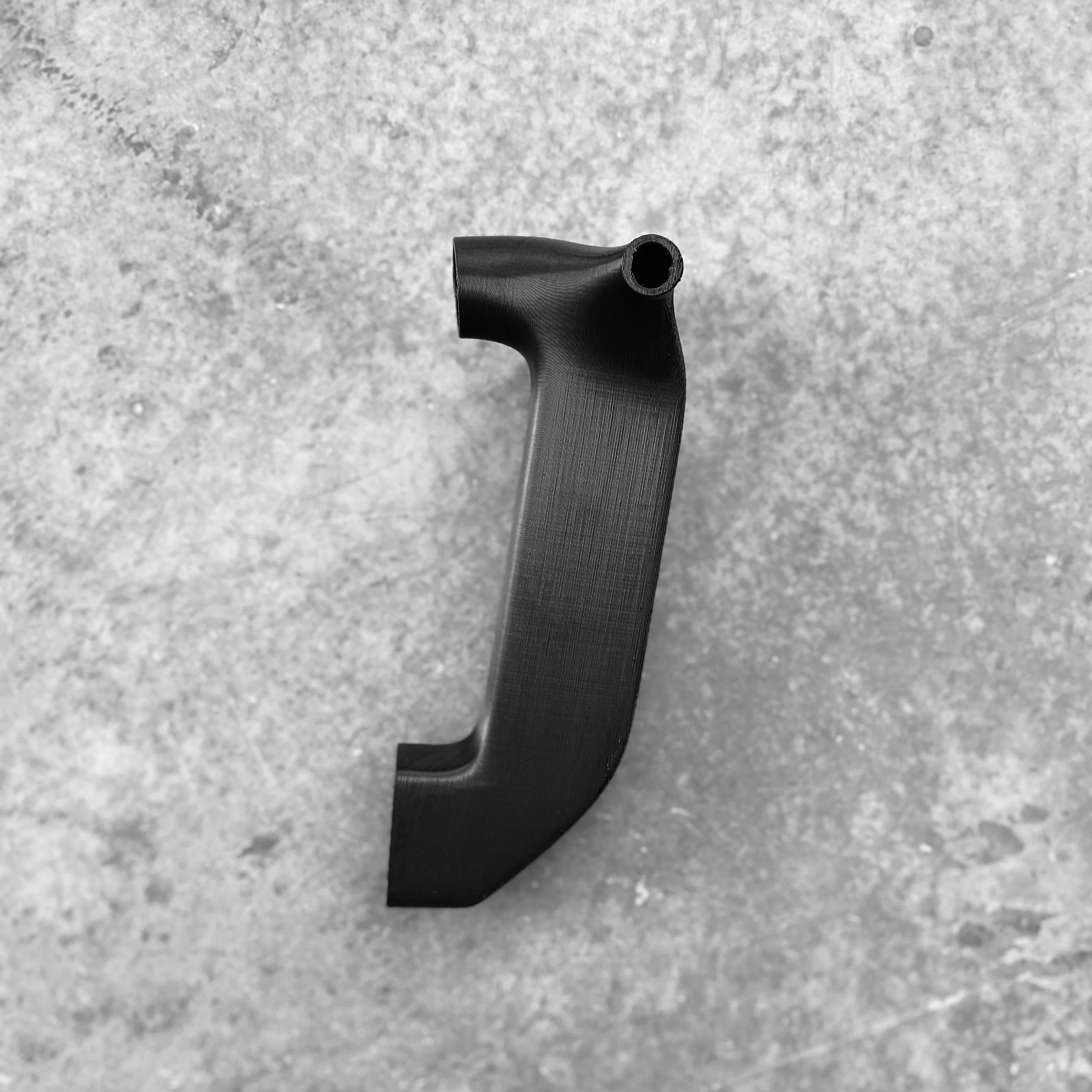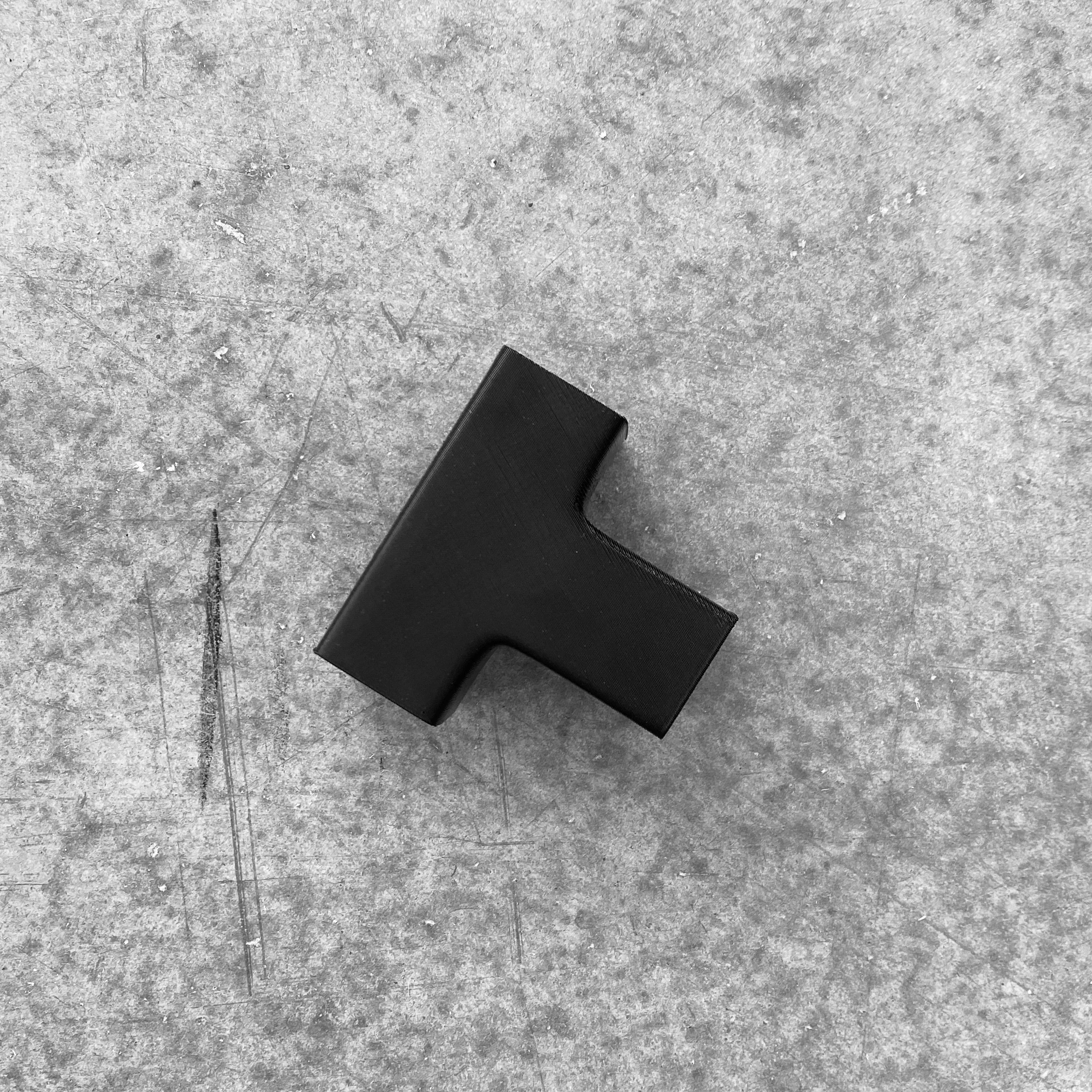Playing with the Wind
As someone who values the power of outdoor recreation to support personal and social well-being, I created this project as my graduation project for the Bachelor of Industrial Design program at Emily Carr University of Art and Design. I aimed to explore how urban environments could foster more direct and sensory engagement with natural systems, specifically the wind, through sports and play.
The challenge I tackled was making the experience of wind-based outdoor activities more accessible in urban contexts. The project focused on designing an approachable interaction that allows users to play with the wind, using lightweight, intuitive equipment paired with low-friction land or snow devices. I sought to create a body-wind interaction that would promote curiosity, awareness, and connection with natural forces like the wind in everyday city environments.
The development process was grounded in both place-based research and conversational inquiry. I conducted informal interviews with individuals experienced in wind sports and reflected on my own lived experiences. Additionally, I examined potential urban sites in the Vancouver area, using tools such as portable anemometers to assess wind conditions.
I designed two wind-powered tools:
A symmetrical spinnaker sail is an introductory tool for downwind sailing only.
A wing provides greater flexibility for interaction and play.
These are meant to be used with user-selected low-friction platforms, such as skateboards or skates, in open, flat, public spaces that have sufficient wind.
Prototyping and Testing:
I began with sketches and low-fidelity models, then progressed to half-scale textile prototypes and full-scale functional wind devices. The prototypes were tested under real conditions, allowing me to assess material choices, construction techniques, and performance.
Material and Technical Skills:
I enhanced my understanding of lightweight performance textiles, such as ripstop nylon and repurposed fabric from kiteboarding kites, and developed 3D modeling techniques for textiles using Rhino. I generated digital sewing patterns from complex surfaces. I repurposed damaged hockey sticks and ski poles and designed custom connectors in Rhino that I made through additive manufacturing, refining designs with PLA, and finalizing them in polycarbonate ABS for added durability.
Tools are packed in a custom bag for easy transport.
Sail
Wing
Design Process
Conversations, place-based research and observation
Prototyping and testing
Understanding textile properties and construction techniques
3D Modeling textile patterns
3D modeling and use of additive manufacturing technologies
This project was a turning point in my design education. I developed research and communication skills, learned to apply technical and material knowledge to soft and hard goods prototyping, and pushed my capabilities in CAD and fabrication. I also acquired valuable project management skills, including setting clear goals, defining key milestones, and effectively scheduling my work to ensure the project was delivered on time. Most importantly, I learned how thoughtful design can make abstract environmental forces like wind tangible and engaging, even in urban life.



